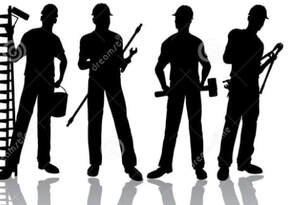Is There a Difference Between Working in the Blue Collar and White Collar Sectors?
White-collar workers, in contrast to their blue-collar counterparts, are more likely to use long-term planning to complete a series of ongoing projects. There are a large number of blue-collar workers in the industrial, agricultural, construction, and manufacturing sectors. This means that jobs in the white-collar sector are more likely to be performed in a workplace setting. As part of a company's daily operations, white-collar employees are typically responsible for administrative, clerical, or managerial tasks.
Blue-collar workers and white-collar workers have been separated by their collars since the 1920s. This time period saw a lot of blue-collar workers donning denim and similar durable fabrics. Workers in the middle class and wealthy business owners, meanwhile, were more likely to wear tailored white shirts to work than blue-collar workers.
There are still distinct white-collar and blue-collar workplaces, despite the fact that these descriptors as it relates to attire may no longer be accurate.
Where are the differences between blue-collar and white-collar jobs?
In order to better understand the two different job categories, it is helpful to understand the context and skills that set them apart.
Here are the four most significant variations:
The place of work
The majority of white-collar jobs are done at a desk or computer in an office environment. If you have a job like this, you'll likely find yourself in a variety of places at various times of the day and night.
The working conditions of blue-collar workers are less clear-cut. They can be found in warehouses, factories, plantations, and workshops, as well as private homes and businesses. To build a product or provide a service, these workers often work in the background, operating large machines.
Blue-collar workers and white-collar workers have been separated by their collars since the 1920s. This time period saw a lot of blue-collar workers donning denim and similar durable fabrics. Workers in the middle class and wealthy business owners, meanwhile, were more likely to wear tailored white shirts to work than blue-collar workers.
There are still distinct white-collar and blue-collar workplaces, despite the fact that these descriptors as it relates to attire may no longer be accurate.
Where are the differences between blue-collar and white-collar jobs?
In order to better understand the two different job categories, it is helpful to understand the context and skills that set them apart.
Here are the four most significant variations:
The place of work
The majority of white-collar jobs are done at a desk or computer in an office environment. If you have a job like this, you'll likely find yourself in a variety of places at various times of the day and night.
The working conditions of blue-collar workers are less clear-cut. They can be found in warehouses, factories, plantations, and workshops, as well as private homes and businesses. To build a product or provide a service, these workers often work in the background, operating large machines.






